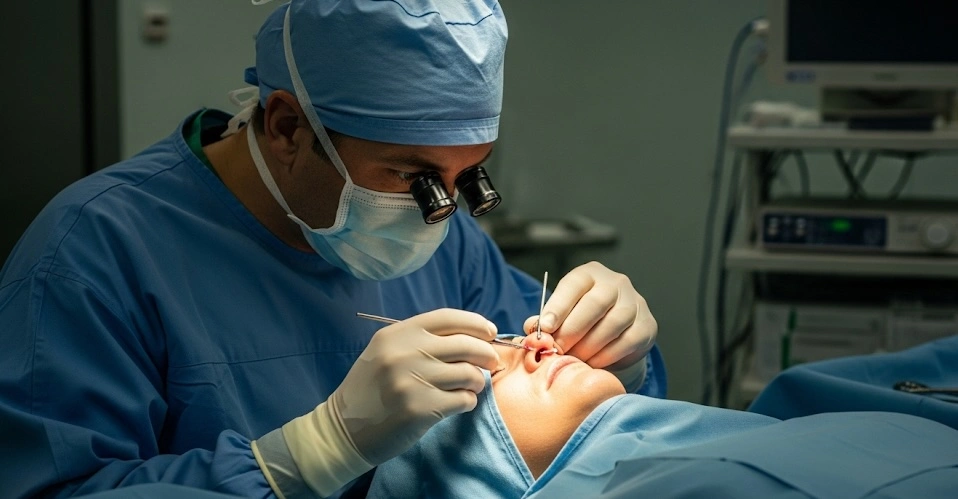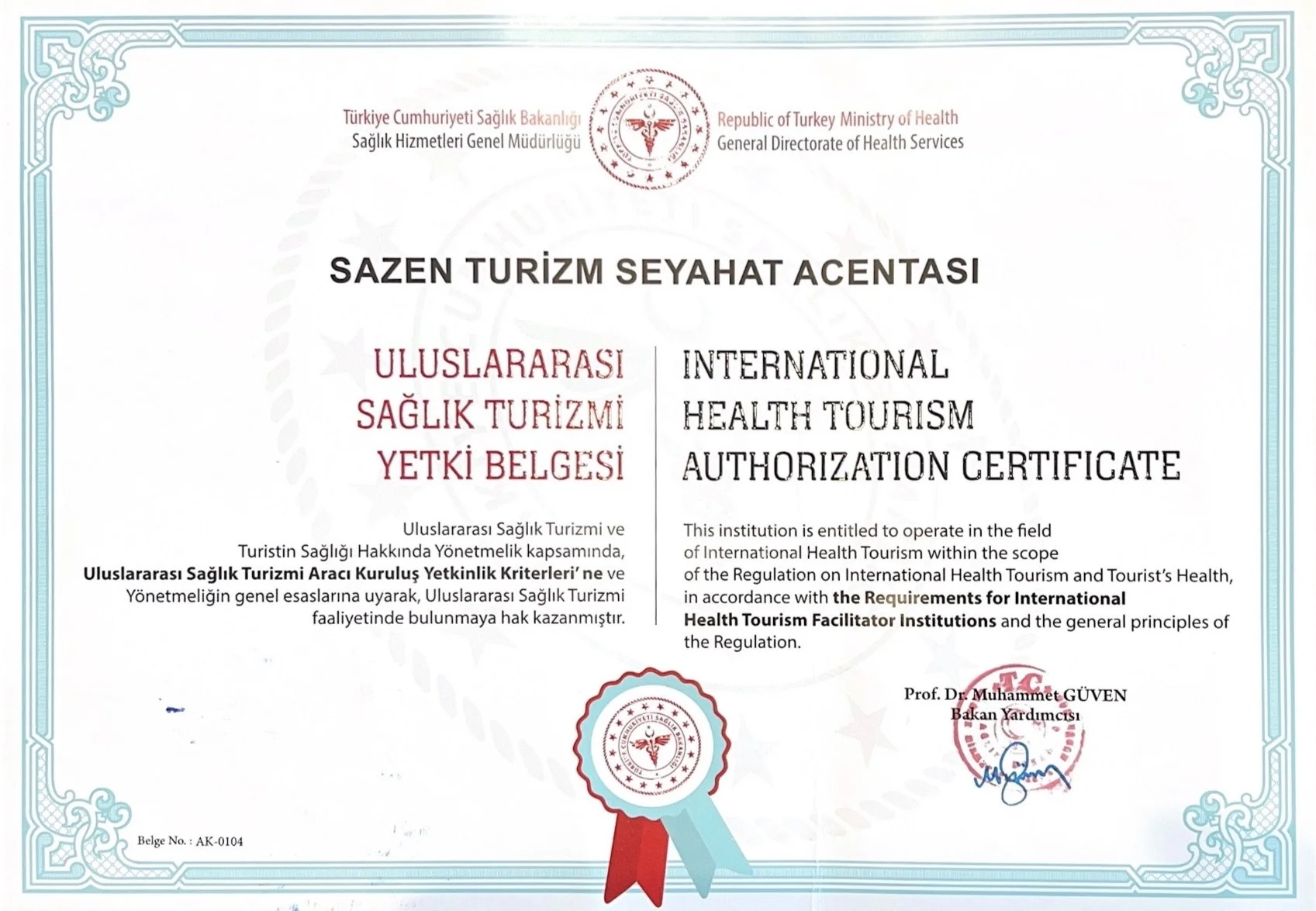Rhinoplasty, a transformative procedure, significantly alters nasal aesthetics and function. While often successful, some patients experience unforeseen complications. A collapsed nose after rhinoplasty, characterized by structural compromise, presents a particularly challenging outcome. This condition impacts both appearance and breathing, leading to patient distress. Understanding its origins and manifestations is crucial for effective management. Factors such as aggressive cartilage removal or inadequate support contribute to this structural failure. This complication, though uncommon, requires specialized reconstructive approaches. Addressing this complex issue demands meticulous surgical planning. This includes evaluating the remaining nasal framework.
Table of Contents
What Causes a Collapsed Nose After Surgery and How Does It Happen?
Nasal collapse after rhinoplasty represents one of the most concerning complications that can occur following nose surgery. Understanding why noses collapse after rhinoplasty requires examining the complex interplay between surgical techniques, structural integrity, and healing processes. Through decades of clinical experience, we have identified several key mechanisms that contribute to this devastating outcome.
The primary causes of collapsed nose after surgery include:
- Excessive cartilage removal: Overly aggressive resection of nasal cartilage, particularly the dorsal struts and lateral cartilages, compromises the nose’s structural framework. When surgeons remove too much supporting tissue, the remaining structure cannot maintain adequate shape and function.
- Inadequate structural support: Failure to preserve or reconstruct essential support mechanisms leads to cartilage breakdown after rhinoplasty. The nasal tip and sidewalls require sufficient cartilaginous support to resist the forces of scar contraction and tissue healing.
- Disruption of the internal nasal valve: Aggressive manipulation of the upper lateral cartilages can cause nostril collapse by weakening the valve mechanism. This area requires precise surgical technique to maintain both function and structural integrity.
- Poor surgical technique: Inexperienced surgeons may inadvertently damage critical supporting structures, leading to collapsed nose from surgery. Improper handling of cartilage grafts or failure to maintain adequate blood supply contributes to structural failure.
- Healing complications: Infection, excessive scar tissue formation, or compromised wound healing can weaken the nasal framework. These factors often work synergistically to undermine surgical results.
The mechanisms behind what causes a nose to collapse after rhinoplasty involve the gradual loss of structural support over time. As healing progresses, weakened cartilage structures succumb to the natural forces of scar contraction, gravity, and respiratory dynamics, ultimately resulting in the characteristic appearance of a collapsed nose after rhinoplasty. Rhinoplasty Men Balance Nose procedures must ensure proper support to prevent these outcomes. Adequately reinforcing the nasal framework can help maintain the desired shape and function over time.
Risk Factors and Timeline: When Can Nose Collapse Occur?
The following data demonstrates the statistical probability and timeline for nasal collapse following rhinoplasty procedures:
| Timeline | Occurrence Rate | Risk Level | Primary Causes |
|---|---|---|---|
| 0-6 months | 2-3% | Moderate | Surgical trauma, inadequate support |
| 6-12 months | 4-6% | High | Scar tissue formation, cartilage weakness |
| 1-5 years | 8-12% | Highest | Progressive structural changes |
| 5+ years | 15-20% | Variable | Age-related tissue changes |
How common is nasal valve collapse after rhinoplasty varies significantly based on surgical technique and patient factors. Studies indicate that chances of nose collapse after rhinoplasty increase substantially during the first two years post-surgery, with peak incidence occurring between 12-24 months.
Several critical risk factors substantially elevate the likelihood of nasal structural compromise:
- Excessive cartilage removal during initial surgery
- Inadequate structural support preservation
- Previous nasal trauma or multiple rhinoplasty procedures
- Weak cartilage framework or congenital abnormalities
- Poor wound healing characteristics
- Smoking and compromised tissue oxygenation
- Aggressive reduction of nasal dorsum
- Inadequate lateral wall support maintenance
Nose collapse years after rhinoplasty represents a delayed complication affecting approximately 15-20% of patientsbeyond the five-year mark. When does nose collapse after rhinoplasty occur depends largely on individual healing patterns and structural integrity preservation.
The question can your nose collapse after rhinoplasty requires understanding that nasal valve dysfunction develops progressively. Cartilage grafting inadequacy and septal perforation contribute significantly to delayed collapse patterns. Revision rhinoplasty rates increase proportionally with time, particularly in cases involving over-resectionof supportive structures.
Alar collapse and internal valve stenosis represent the most frequent manifestations, with external valve compromise occurring less frequently but with greater functional impact.
Clinical Manifestations and Valve Dysfunction
Collapsed nasal valve after rhinoplasty represents a serious complication that significantly impacts both respiratory function and patient satisfaction. This dysfunction manifests through specific clinical signs that require immediate professional evaluation and intervention.
The primary symptoms of rhinoplasty complications nose collapse include:
- Severe nasal obstruction that worsens during physical activity or emotional stress
- Inspiratory nasal collapse visible during deep breathing attempts
- Chronic mouth breathing leading to dry mouth and sleep disturbances
- Nasal whistling sounds during respiration, particularly noticeable at night
- Reduced exercise tolerance due to compromised nasal airflow
- Persistent nasal congestion unresponsive to standard decongestant treatments
Internal nasal valve collapse typically occurs at the narrowest portion of the nasal cavity, where the upper lateral cartilages meet the nasal septum. This anatomical weakness creates a dynamic obstruction that becomes more pronounced during inspiration. The Cottle maneuver serves as a diagnostic tool, wherein gentle lateral traction on the cheek temporarily opens the collapsed valve, providing immediate symptomatic relief.
Rhinoplasty nasal valve collapse frequently presents with secondary complications affecting the entire respiratory system. Patients often develop compensatory breathing patterns that strain the lower respiratory tract. The functional impact extends beyond mere breathing difficulties, affecting sleep quality, vocal resonance, and overall quality of life.
Clinical examination reveals specific findings including alar rim retraction, external valve narrowing, and paradoxical nasal wall movement during inspiration. These manifestations distinguish valve dysfunction from other post-operative complications such as septal deviation or turbinate hypertrophy.
The rhinoplasty surgeon nose collapse evaluation requires comprehensive assessment using acoustic rhinometry and rhinomanometry to quantify airflow resistance. These objective measurements complement subjective symptom reporting, providing essential data for treatment planning. Advanced imaging techniques, including CT scanning and endoscopic evaluation, help identify specific anatomical defects contributing to valve dysfunction.
Early recognition of these clinical manifestations enables timely intervention, preventing progression to more severe functional impairment and reducing the complexity of required corrective procedures.
Structural Impact: How Nose Collapse Affects Your Appearance
Nasal collapse following rhinoplasty creates distinct aesthetic changes that significantly impact facial harmony and overall appearance. Our extensive clinical experience demonstrates that these structural alterations extend far beyond simple cosmetic concerns.
Key Physical Changes:
- Bridge depression: The most visible sign involves a sunken nasal bridge that creates an unnatural concave profile, dramatically altering the nose’s projection and prominence
- Height reduction: Loss of nasal height after rhinoplasty occurs when supporting cartilage weakens, causing the nose to appear shorter and less defined than intended
- Tip drooping: Weak nasal structure after nose job leads to ptosis of the nasal tip, creating a downward-pointing appearance that affects the angle between nose and upper lip
- Asymmetrical contours: Uneven collapse patterns result in irregular nasal contours, with one side appearing more depressed than the other
- Widened appearance: Collapsed nose structural integrity compromises the nose’s ability to maintain its refined shape, often causing lateral spreading
Facial Harmony Disruption:
The nasal bridge sunken after rhinoplasty creates a domino effect across facial features. The eyes appear more prominent, whilst the mid-face loses definition and projection. This collapsed nose bridge after rhinoplastyfundamentally alters the golden ratio proportions that define attractive facial aesthetics.
Secondary Aesthetic Concerns:
Collapsed nose aesthetic issues extend to skin irregularities, including visible ridges, shadows, and texture changes. The compromised nasal framework cannot adequately support overlying soft tissues, resulting in skin that appears loose or bunched in certain areas, particularly around the supratip region.
Treatment Solutions and Management Approaches
Surgical revision procedures represent the primary treatment for collapsed nose after rhinoplasty, with specific techniques tailored to individual structural deficiencies. Revision rhinoplasty for collapsed nose requires comprehensive assessment and strategic planning to restore both function and aesthetics.
Primary treatment options include:
- Cartilage grafting using autologous materials from septum, ear, or rib
- Structural reconstruction with spreader grafts to widen internal nasal valve
- Lateral wall stabilisation through lateral crural strut grafts
- Alar batten grafts for external nasal valve collapse
- Composite grafts combining cartilage and soft tissue components
Non-surgical management approaches focus on symptom relief and supporting healing during early post-operative periods. These conservative measures prove effective for minor cases or as adjunctive treatments.
Conservative treatment strategies encompass:
- Nasal dilator strips to improve airflow temporarily
- Saline irrigation systems for mucosal health maintenance
- Topical decongestants under medical supervision
- Breathing exercises to optimise residual nasal function
- Humidification therapy to prevent crusting and inflammation
Preventing nose collapse after rhinoplasty requires meticulous surgical technique and appropriate post-operative care protocols. Our extensive experience demonstrates that prevention strategies significantly reduce revision rates.
- Preserve adequate structural support during primary surgery by maintaining sufficient cartilage framework
- Implement gradual tissue modification rather than aggressive resection techniques
- Monitor healing progression through scheduled follow-up appointments at specific intervals
- Address complications promptly when early warning signs appear during recovery
Managing nose collapse after rhinoplasty demands individualised treatment plans based on severity, timing, and patient-specific factors. Early intervention within the first year typically yields superior outcomes compared to delayed treatment approaches.
Advanced reconstruction techniques utilise computer-assisted planning and three-dimensional imaging to achieve optimal results. These sophisticated approaches enable precise graft placement and structural restoration with minimal additional trauma.
Treatment for collapsed nose after rhinoplasty requires specialist expertise and comprehensive facilities. CK Health Turkey in Antalya performs rhinoplasty surgery with specialist surgeons in well-equipped hospitals, using the latest techniques and methods, and the highest quality materials. Patient satisfaction remains consistently high in rhinoplasty procedures overall, reflecting our commitment to excellence in facial reconstructive surgery outcomes.




